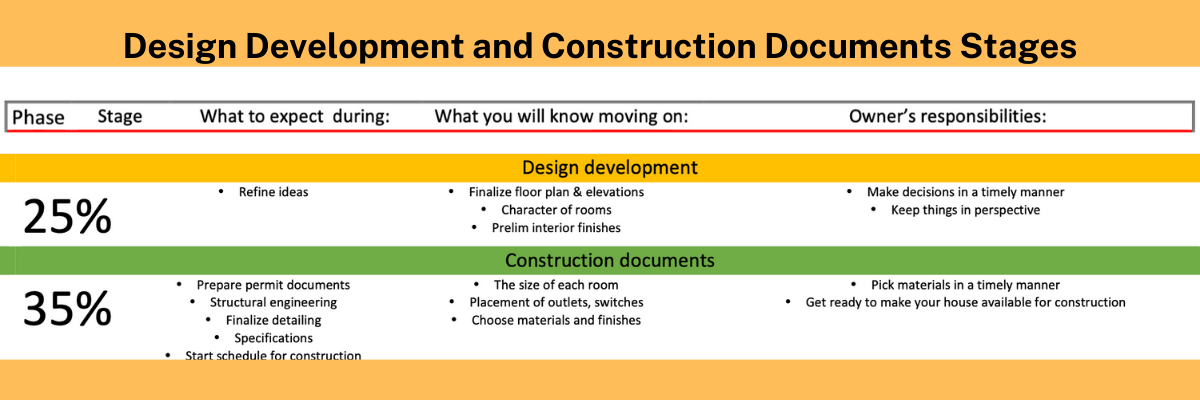Our first post in this series highlighted expectations for the pre-design stage through zoning, the creation of a preliminary budget, a tentative schedule, through to the schematic design.
Design Development
This is the next stage of the design-build project. It is a time to refine ideas, but as they say, the devil is in the details. Thought of in another way, this is when an architect and the homeowner(s) get to dream a little and then to choose from the various options to determine the direction a design will take. What feels right? Is there a big difference in cost between one design option and another? Are you being swayed by what is trending now, or will you be able to embrace these changes in years to come? After all, rooms take on certain characteristics. Warmth, coziness, vibrancy utilitarianism, luxury and spaciousness come to mind. Which of those aspects is right for your design?
This stage is exciting, fun and may prove to be the most interactive in the entire process. Working in concert with your architect, ideas are assessed, expanded, modified and explored as you see aspects of rooms take shape. Don’t hesitate to ask questions. If you need more information about a design or are having some difficulty envisioning a concept, speak up. This is an opportunity to stretch your imagination while keeping things in perspective. Balancing dreams with the reality of elements like the space you have to work within, the materials that work best in a given environment, and your budget are all part of the mix.
The floor plan and elevations provide the design’s configuration. By this point in the process, the character and ambiance of the rooms need to be narrowed down before you move forward. Initial ideas about finishes and surfaces all play a role in the look and feel of a completed project. Fortunately, you’ll still have a little time to imagine your new design with a variety of finishes before making a final decision on interior details.
Being realistic about your options and staying on track can seem challenging at times. Effective communication plays an important role in keeping the design-build project on track.
Construction Documents
Once you’ve decided on the form, function and dimensions of your design-build project, your architect will create one set of construction drawings that brings together every detail of your final design. That is referred to as a construction set that your general contractor will use as a guide during the construction administration.
That is only half of the working set of plans. The second one is a set of drawings that relate to the permitting process. Your architect will submit those to your local permitting authority in your particular municipality. Local zoning and building codes must be adhered to when applying for building permits and can take time to secure. Working with an architect who is well-versed in the rules that apply in your neighborhood is a real plus. The timing of permits can also factor into the ability to develop a reasonable construction schedule. During this period, you will also be encouraged to finalize things like the materials and finishes you want to use for the project.
Check back for the next final in this series, Bidding Negotiations and Construction Administration.


